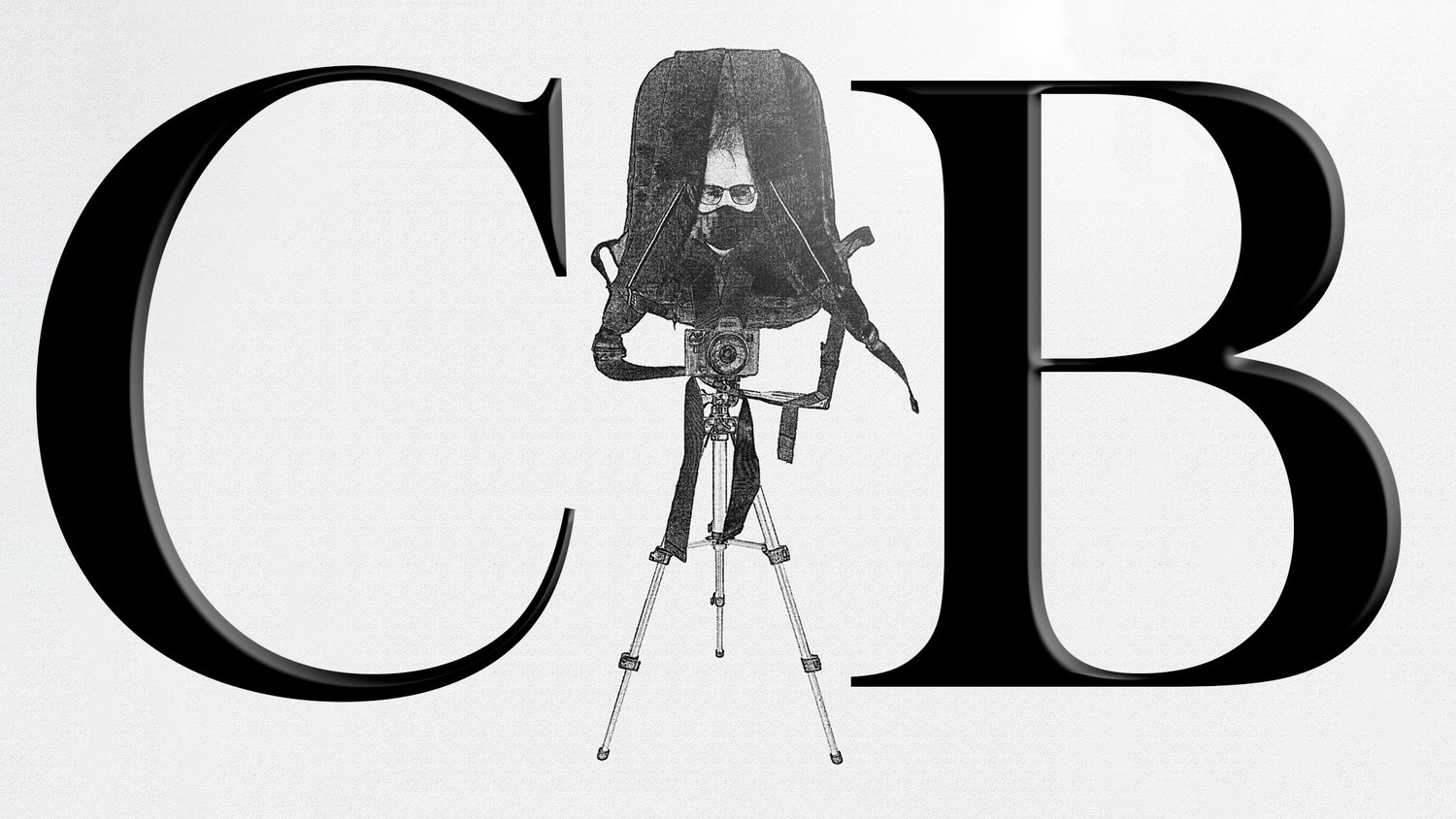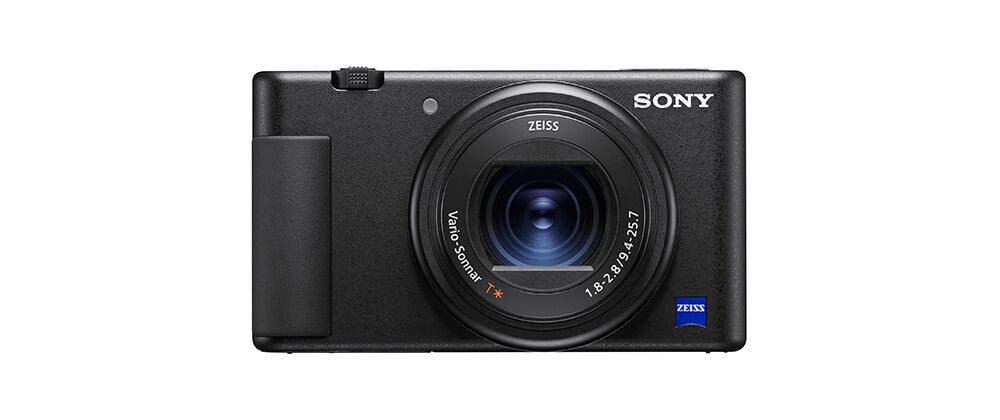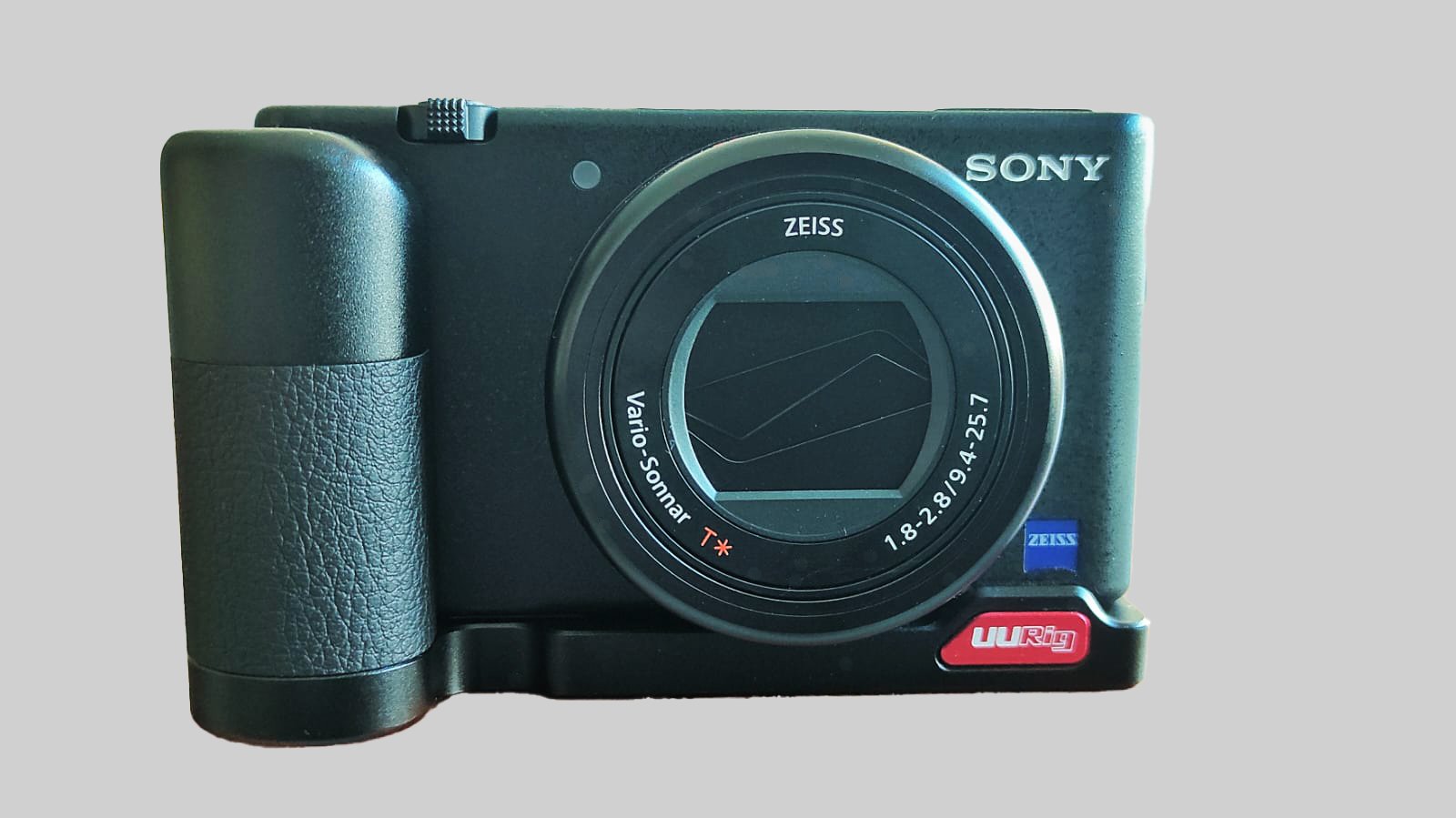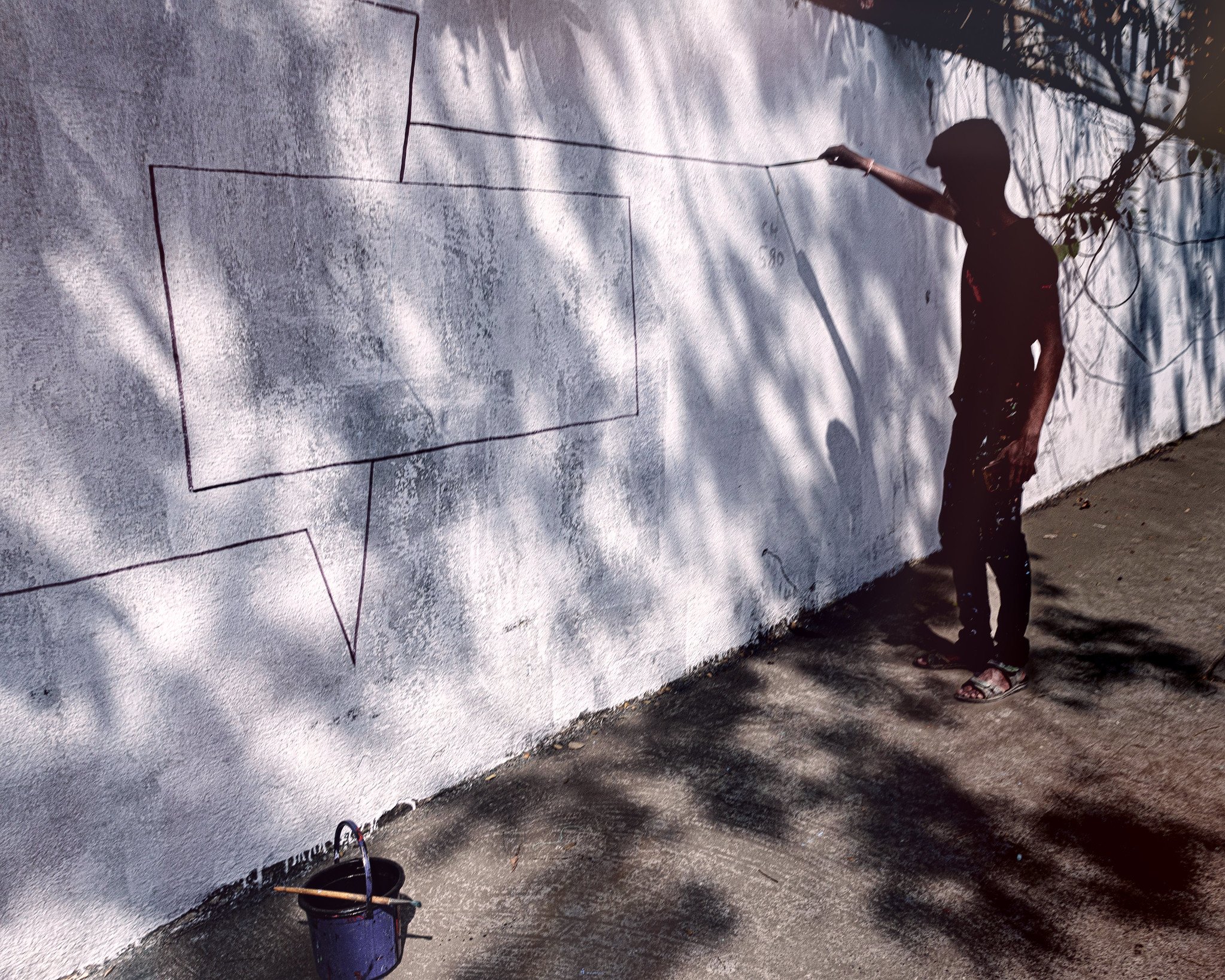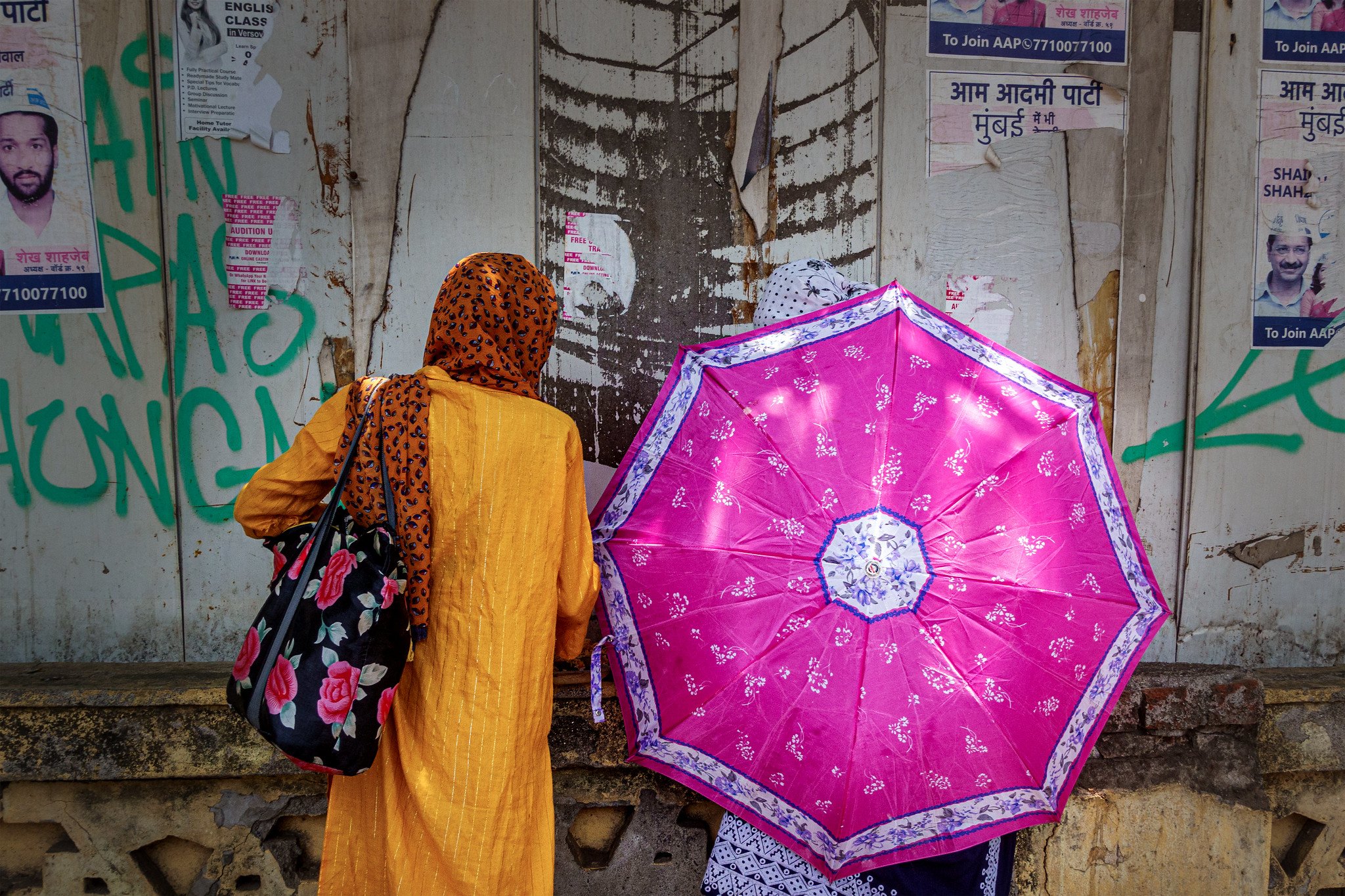First Impressions: The Sony ZV-1 for Street Photography
Image courtesy of Sony
First Impressions of the Sony ZV-1
The initial "First Impressions" article on the Sony ZV-1 was published in January 2023. After nearly a year and a half of using this camera extensively, it's time for an update. This new article will reflect my continued experience with the Sony ZV-1 and address the latest version, the Sony ZV-1 Mark II. I'll discuss whether the new version is worth upgrading to, considering its new features and improvements. Additionally, I'll revisit some of the original talking points, including how the Sony ZV-1 remains one of the best compact, pocketable cameras for street photography for under $700.
Size and Form Factor
When it comes to size, the Sony ZV-1 stands out among its peers. With dimensions of 105.4 x 60.0 x 44.0 mm (4.15 x 2.36 x 1.73 inches) and a weight of approximately 294 grams (10.37 ounces) including the battery and memory card, it remains impressively compact. It fits comfortably in any pocket I own — blue jeans, shorts, or jacket — even with the added grip plate I chose to reduce the chances of it slipping from my hand.
Image by Craig Boehman
I must admit, it took some time to get used to the limitations of a compact camera compared to my Sony full-frame mirrorless cousin. However, after using the Sony ZV-1 for well over a year, I've grown to love its convenience. The ability to slip it into my pocket and head out the door for some street photography is incredibly refreshing. There's no need for a backpack or camera bag for short sessions — just grab an extra battery or two and I'm set for a few hours of shooting, whether it's street photography or capturing fine art images, especially my ICM prints. This model has significantly impacted my approach to photography, reshaping my benchmarks for what my ultimate camera would be (even if such a camera doesn't yet exist). Hats off to the Sony ZV-1 for enduring through thick and thin. Its compactness fills a niche gap quite nicely in my photography workflow.
Battery Life of the Sony ZV-1
Let's address the elephant in the room: the battery life of the Sony ZV-1 could be better. Official specifications suggest you’ll get around 260 still shots per charge of the NP-BX1. While this may be accurate, I find these metrics less useful for my needs. I keep the camera on constantly when actively shooting street photography to avoid missing any shots, which means I probably use up batteries faster than the average user. Based on my experience, I estimate the battery lasts between two to three hours, depending on how many subjects I'm photographing. For planning purposes, I consider each battery to last about two hours. For a full day of street or fine art photography, I carry four extra batteries to ensure I have enough power. This strategy has reliably supported me through several 8+ hour shooting sessions. The batteries are small and lightweight, so they don't add much bulk.
* During a recent photography session, I started with a fully charged battery and kept the camera on the entire time. The shoot was particularly intense at a bustling train station, resulting in the battery draining completely, causing the camera to shut off after one hour and 40 minutes. While continuous shooting might deplete the battery faster, I estimate my typical usage still gives me about two hours of operation.
Why I Won’t Be Discussing Video & Vlogging Features
For better or worse, my review of the Sony ZV-1 will not cover the video specs or how they might benefit vloggers, which is the primary audience Sony targets with this camera. When I purchased the ZV-1, I opted for the full accessories kit, which included items like a selfie stick and mic muff. While I initially deemed these accessories unimportant, I found that the selfie stick offered an additional tripod option and made one-handed operation easier.
However, I am primarily a stills photographer. My primary use for this camera would be street photography, and as I’m getting even more comfortable with it, for my fine art photography too. If it were up to me, none of my cameras would have video capabilities. I prefer focusing solely on photographic features and have no interest in video-making. As someone who lacks the time and expertise to delve into video production and its associated software, any professional video work I need will be outsourced to a fellow pro.
Therefore, this article will not delve into the video specs of the ZV-1. I will briefly touch on them at the end when comparing the Sony ZV-1 with the Sony ZV-1 II, discussing whether current ZV-1 owners should consider upgrading or if new buyers should go straight for the ZV-1 II. If you’re interested in video and vlogging, I suggest that you find another reviewer who could help you better with your purchasing decision. But if you’re also a stills shooter and happen to love street photography, stick around because there may be some useful information in this regard too.
Sony ZV-1 Features That I Use (and Don’t Use)
As a professional photographer, I’ve had to adjust my expectations for what a compact camera can deliver. Although I believe that new mirrorless compact cameras should offer more advanced features than high-end smartphone cameras, this isn't always the reality. Camera manufacturers should consider expanding their features to surpass those found in premium Android and iPhone models, as smartphone cameras are rapidly catching up. While compact mirrorless cameras like the Sony ZV-1 and its successors currently offer good value for their price, this may not always be the case unless there's innovation to keep these cameras relevant. Most of us prefer to carry just one camera, and increasingly, both amateur and professional photographers are choosing their phones as their primary or secondary cameras. Given this trend, I'd like to highlight some features of the Sony ZV-1 that I frequently use in my street and fine art photography.
As a side note, I currently use a Sony full-frame mirrorless system, the Sony ZV-1 as my pocket camera, and my smartphone camera. In an ideal world, I’d only need two cameras, including my smartphone. However, until a full-frame system with dual card slots or equivalent redundancy features fits in my pocket, I’ll be the one carrying up to three cameras at a time. Photographers like myself always crave specialized gear that offers capabilities beyond what most casual photographers have. This has been my experience, at least. Now, let’s get to the features!
Highlight Metering Mode - I Use Sometimes
Image by Craig Boehman
Discovering a hidden gem within the metering modes was unexpected, yet here we are. The ZV-1's Highlight metering mode mirrors a post-processing preference I often employ for my images. True to its name, this mode safeguards highlights from overexposure, a boon during sunny Mumbai strolls. However, there's a trade-off: shadows swiftly plunge into darkness, obscuring details across significant portions of the image. This contrasts with my usual approach of using the Multi mode, which delivers a more balanced exposure across the frame.
While I appreciate the shift in the visual aesthetic of my images, using this mode frequently requires additional post-processing to recover shadow details. I've found myself editing most of the images to restore these shadows. However, I'm enjoying this process because starting with a darker canvas in Lightroom and Photoshop offers creative opportunities. If I require a more conventional approach, I can simply switch back to Multi mode.
Image by Craig Boehman
In the image above, the pixels on the left representing the auto-rickshaw’s side mirror and frame were initially completely black. I had to selectively adjust the exposure and fine-tune the shadows, whites, and blacks sliders to reveal these details. However, I find this effect appealing because it naturally obscures unnecessary details, leaving it up to me to decide what to revive, if anything.
I considered using Highlight Metering as my go-to mode, but I encountered a significant issue with it on the Sony ZV-1's screen. Sometimes, the shadows appear excessively dark and numerous, which might be due to the Highlight Metering itself or the relatively small LCD screen. Consequently, I reserve Highlight Metering for short sessions on bright, sunny days with lots of reflections from materials like metal and glass. It's just not worth missing crucial details I might need. As much as I love this feature, I can’t rely on it all the time and prefer using Multi metering mode for my everyday settings.
The Defocus Button - I Don’t Use
The Defocus button on the Sony ZV-1 is conveniently assigned to the C1 button located on the top-right of the camera. This feature quickly adjusts the aperture to its widest setting based on the current focal length. For example, if I'm shooting at 24mm in Aperture Priority mode at f/8, pressing the Defocus button instantly changes the aperture to f/1.8. Pressing it again returns to the previous settings. When shooting above 24mm, the Defocus button adjusts the aperture to a range between f/1.8 and f/2.8. While the bokeh and blur produced by the ZV-1 aren't as impressive as those from full-frame lenses, it does offer enough blur to reduce distractions or highlight a subject in a portrait, even if it doesn't deliver a "wow" factor.
Here’s a video demonstration to give you an idea of what Defocus can do.
The Sony ZV-1 isn't perfect, but a little background blur can be nice. Personally, it's not a feature that I use at all. I'm accustomed to shooting in Manual Mode and making adjustments on the fly, so I don't find it necessary. You might think it would be useful for quickly switching from a higher aperture to the lowest possible due to sudden lighting changes, but I prefer not to rely on that. I don't work that way with my main camera and prefer to stick to the basics and adjust as needed, rather than trying to remember which button to press in case of a sudden lighting change. But the feature is there for you in case your workflow is more flexible.
Silent Mode - I Use
Similar to many cameras in Sony's mirrorless lineup, the Sony ZV-1 offers a silent mode, though it's not explicitly labeled as "Silent Shooting." To deactivate the shutter and other audio cues, you need to navigate to the Audio settings. From there, you can choose to mute all audio or just the shutter sound. Interestingly, the shutter sound is incredibly subtle! When I'm out shooting on the streets, it's barely audible. While this is advantageous in many situations, there are times when I want to hear the shutter sound to confirm that I've captured an image without alerting everyone around me. However, my standard practice is to keep my Sony ZV-1 silent while shooting street photography. I only change this setting if a particular function requires the audio cues to be on, which is rare.
Burst Mode - I Use
In continuous shooting mode set to High, the Sony ZV-1 can capture an impressive maximum of 24 frames per second. This is remarkable, especially considering my experience with the Sony A7 III, which maxes out at 10 or 11 frames per second. While Sony’s autofocus is robust, it may not lock onto your subject every single time during burst shooting. However, the increased frame rate significantly improves the chances of getting an in-focus image. Typically, I use burst mode set to High with continuous autofocus (AF-C) enabled. If my subject doesn’t require such a high burst rate, I adjust it down to Mid or Low settings, or even to Single Shot AF if I'm photographing a person rather than capturing candid street scenes.
Creative Styles - I Don’t Use
You can find the Creative Style menu on page 9 out of 12 in the first menu tab. If you're interested in exploring options beyond Standard (std.), you'll find choices like Vivid, Portrait, Landscape, Sunset, Black & White, and Sepia.
I played around with the Black & White and Sepia settings, thinking it might be interesting to start with a more street photography-inspired look. However, I found that the black-and-white profile tends to crush the shadows a bit too much for my taste. As for the Sepia setting, it leans too heavily towards reddish tones and just doesn't look appealing. Despite my initial excitement about shooting in monochrome mode and then tweaking the images, I've decided to stick with the Standard profile and adjust the photos as necessary during post-processing. I've found that I can achieve better results with my own black-and-white and sepia conversions.
Built-In ND Filter - I Use
This is one of the most convenient and incredibly useful features a compact camera can offer, especially if you prefer not to purchase additional accessories for attaching filters. My goal is to maintain the camera's small form factor. The only exception I've made is adding an L-bracket grip, which I found essential for better handling, without compromising pocketability.
I've programmed the ND filter option into the FN button menu for easy access. I enjoy slow shutter speed photography, particularly ICM, which would be impossible in bright conditions without this feature. It's simple to use: just access the menu and select it. There's also an auto option, which I haven't used yet because it's not available in silent shooting mode. However, I believe it would be incredibly useful on cloudy days when the lighting changes rapidly.
Image Quality of the Sony ZV-1
Before delving into my opinion on the image quality of the Sony ZV-1, allow me to provide some context. Simply labeling the image quality as "good," while accurate, might not suffice if you're contemplating purchasing this camera as your primary street shooter or as a convenient backup option. When I acquired this camera, I had specific needs in mind: I required a compact camera that I could operate with ease using just one hand. Additionally, I was keen on a compact camera packed with features that would offer me advantages over relying solely on a smartphone for photography.
In assessing the image quality, I'm viewing it through the lens of a photographer equipped with a full-frame mirrorless camera and an extensive array of lenses. My satisfaction with the image quality and performance of the Sony A7iii, my primary tool for street and fine art photography, sets a high standard. Barring any significant technological advancements in photography or the eventual aging of my current gear, I plan to stick with my current setup.
In my assessment, the image quality delivered by the Sony ZV-1 is sufficiently impressive to serve as a dedicated street photography camera. To elaborate further, I would venture to say that its image quality may even surpass that of many smartphone cameras currently available, including various iPhone models. Despite the emphasis often placed on megapixel counts and AI capabilities, the fundamental principles of physics continue to play a dominant role in determining image quality, favoring the larger sensor size of a dedicated camera over computational photo processing.
So you may ask, “Craig, what exactly are you saying? Do you love the image quality? Are you blown away by it?”
No, I'm not blown away by the image quality of the Sony ZV-1. As someone who primarily shoots with a full-frame camera, I don't have a strong affinity for it. It gets the job done. While having a Zeiss lens certainly contributes to better-than-average image quality, those accustomed to extensive cropping, intensive photo editing, and meticulous pixel-peeping may not be particularly impressed.
Despite not being blown away, I find the image quality of the Sony ZV-1 good enough to work with. As a professional photographer with a keen interest in photo editing, I don't consider my decision to use the ZV-1 as settling in terms of image quality. I'm confident in my ability to make it work for my needs, especially in my fine art images, where the typical benchmarks set for sharpness and image quality may not be so relevant.
Who Should Be Using the Sony ZV-1 for Street Photography?
Street photographers are a diverse and particular group, each with their own unique approach. It's unlikely that any two seasoned street photographers will agree on everything. As I continue my street photography journey, I've realized that my shooting style is influenced by many factors and conditions, including where I live. Here, street photography is relatively easy and generally involves less confrontation compared to the West. With these biases in mind, I want to suggest how the Sony ZV-1 might benefit photographers at different stages of their street photography journey.
New Street Photographers Getting Into the Game and Not Ready to Settle on an Interchangeable Lens System
This camera is particularly well-suited for street photographers, especially those seeking a dedicated camera for the genre while mindful of budget constraints. Additionally, there might be a niche of photographers still entrenched in the DSLR realm, hesitant to make a significant investment in a new camera system. For them, especially if they're exploring street photography and seeking a versatile mirrorless option without committing to a full array of lenses, the Sony ZV-1 could be an ideal fit.
In the current landscape of mirrorless technology, I wouldn't recommend investing in a DSLR system at this stage. While some may argue otherwise, suggesting that those on a tight budget could potentially get more value from a DSLR setup, I respectfully disagree. Especially for beginners looking to transition from the automatic modes of smartphone photography and take control of their images, mirrorless offers significant advantages. The ability to see precisely what your camera sees in live view mode is invaluable for both immediate improvement and mastering the nuances of the Exposure Triangle. With mirrorless, you can observe how settings affect the image in real-time, eliminating the need for trial and error adjustments after the fact—a significant leap forward from the traditional DSLR workflow.
If you're a newcomer to the realm of mirrorless cameras, working within a budget, and uncertain about making a substantial investment in a new mirrorless system, yet eager to delve into the captivating world of street photography, the Sony ZV-1 might just be the solution you're seeking.
For Pros Needing A Dedicated, Compact Street-Shooter
As a professional photographer, finding the right compact mirrorless camera to complement my primary gear was essential. After thorough research, the Sony ZV-1 emerged as the perfect choice. This decision has proven to be well-founded, and it's satisfying to see that it consistently meets my expectations.
One of the key advantages of the Sony ZV-1 is its portability. The ability to carry it in my pocket rather than a bulky camera bag highlights its practicality. Despite its compact size, the ZV-1 offers a level of versatility that’s crucial for spontaneous shooting, allowing me to capture moments without the need for extensive setup.
My expertise in photo editing allows me to mitigate any minor shortcomings in image quality or performance, ensuring that I can achieve the desired results. The ZV-1's flexibility makes it an excellent companion to my main camera, providing a reliable alternative when I need to travel light or require a discreet shooting option.
The freedom to experiment with the Sony ZV-1 is one of its greatest strengths. It’s a formidable contender against the ubiquitous smartphone, offering superior photographic capabilities while maintaining ease of use. This compact camera enables me to elevate my photography, whether I’m documenting street scenes, capturing candid moments, or working on fine art projects. Its consistent performance and portability make it an indispensable tool in my professional arsenal.
Comparing the Sony ZV-1 Vs. the Sony ZV-1 Mark II: Which Camera Should You Go With?
*Pricing as of May, 2024 at B&H
Let’s get to the point. Which Sony ZV-1 is best for you? When I made my purchase, the Sony ZV-1 Mark II wasn’t available yet, making my decision much simpler. I compared the Sony ZV-1 against all the usual competitors: the Ricoh GR III, various Fujifilm models, Sony's compact options, and offerings from Canon and Nikon. Surprisingly, I ended up choosing the Sony ZV-1 — a camera primarily designed for video enthusiasts and vloggers. And the odd street photography enthusiasts like myself.
Forgive the screenshots, but B&H has a great comparison tool that allows you to view camera specs side by side. I prefer using them for price guides since they often have the best prices. I've purchased cameras and lenses from them in the past and have been satisfied with the products and overall customer experience. So, let’s compare these two cameras side by side, and I'll share my thoughts on which camera might be best for you. Note that I did omit some of the side-by-side video specs comparisons. And these overall favor the Sony ZV-1 Mark II.
Chart 1
Right off the bat, we're comparing two very different cameras: the Sony ZV-1 and the ZV-1 Mark II. The ZV-1 offers a full-frame equivalent zoom of 24-70mm, while the ZV-1 Mark II provides a wider zoom range of 18-50mm. This difference alone marks a clear distinction between the two models. Vloggers might find the wider 18-50mm focal range of the Mark II more valuable, but for photographers, especially street photographers, the necessity of such a wide range is debatable.
There are certain scenarios where a wider range is useful, but as someone who primarily shoots with prime lenses, I find 24mm to be sufficient for most situations. I do own an 18mm prime, but it sees limited use. Street photographers might prefer the Sony ZV-1, particularly when considering the maximum apertures: the ZV-1 maintains an f/2.8 aperture at its maximum focal length of 70mm, while the ZV-1 Mark II drops to f/4, which could be problematic in low-light conditions.
The Big Deal Killer for Me: No Image Stabilization in the Sony ZV-1 Mark II.
While Sony may have optimized this feature for video shooters, making it unnecessary or redundant, for still photographers, the absence of stabilization is a major downside. When choosing between two cameras, one that offers empirically sharper images due to stabilization, the choice becomes obvious, especially considering the focal lengths and maximum aperture range. This omission makes a clear case for sticking with the original Sony ZV-1 for those who prioritize sharpness and image quality in their still photography.
Chart 2
Chart 2 presents some challenges if you're a street photographer considering the Sony ZV-1 Mark II. Not only is your zoom range slightly more limited, though this isn't necessarily a deal-breaker, but the fact that the Mark II only offers Auto and Manual modes for stills might be a concern. For those who rely on semi-automatic modes like Aperture Priority, which is popular among street photographers, the original Sony ZV-1 becomes the clear winner in this comparison.
Chart 3
As you can see, the interface and monitor specs of the Sony ZV-1 and ZV-1 Mark II are virtually identical. However, a notable feature in the ZV-1 Mark II is the inclusion of GPS via a connected smartphone. While there are GPS apps that could likely work with the ZV-1, having integrated GPS functionality in the Mark II is a plus. Personally, I wish Sony would include GPS in all their cameras. As a street photographer who moves around a lot, being able to retrace my steps easily would be incredibly useful. The ability to record my locations seamlessly would enhance my workflow and provide valuable context for my photography sessions.
Chart 4
This isn’t necessarily a deal-breaker for me, but owning a mid-range, modern mirrorless camera without flash capability strikes me as odd. The Sony ZV-1 Mark II lacks this feature, which could be problematic for street photographers who rely on flash to make their images stand out. While I haven't felt the need to use flash (I reserve that for my main camera), it's nice to have the option. I would even appreciate a simple pop-up flash like the one found on some Sony A6000 series cameras. Having no flash capability at all seems highly irregular for a stills camera.
Additionally, the difference in the number of shots available on a single battery charge between the ZV-1 and the ZV-1 Mark II is negligible. However, to be fair, it's worth noting that the ZV-1 Mark II is slightly lighter and less bulky, although I doubt many users would notice such minute differences.
For Street Photographers, There’s No Comparison: The Clear Choice Is the Sony ZV-1 Over the ZV-1 Mark II
Serious photographers should steer clear of the Sony ZV-1 Mark II unless their primary focus is video or vlogging. The original Sony ZV-1 offers a superior zoom range of 24 to 70mm, image stabilization, a better maximum aperture range, flash capabilities, and the regular semi-automatic modes that are essential for street photography. The ZV-1 Mark II is too stripped down for a dedicated street photography enthusiast. If you're searching for the best all-around street photography camera for under $700, the Sony ZV-1 might be the perfect mirrorless system for you.
If you're considering purchasing a Sony ZV-1, please support my blog by using my Amazon affiliate link. It won’t cost you anything extra, and I will receive a small commission. Another great way to support my work is by sharing my articles on social media whenever you find them useful.
